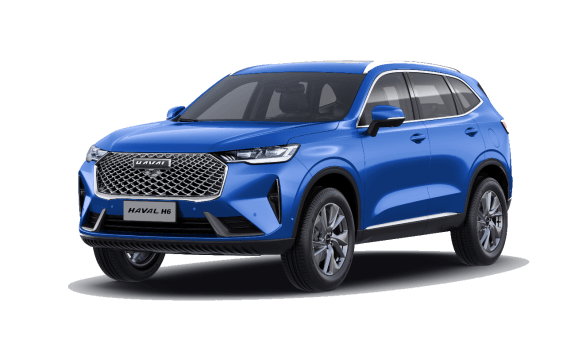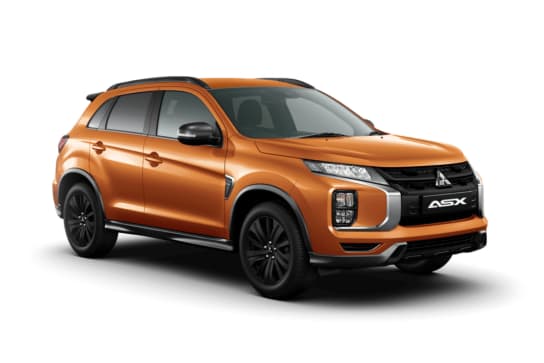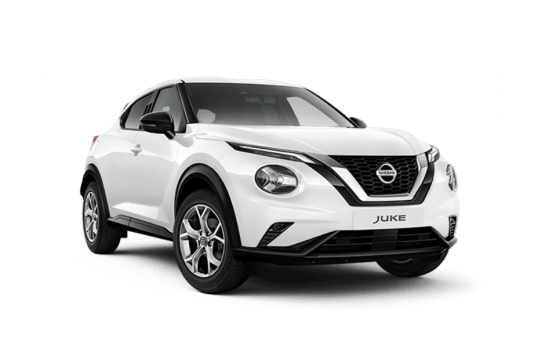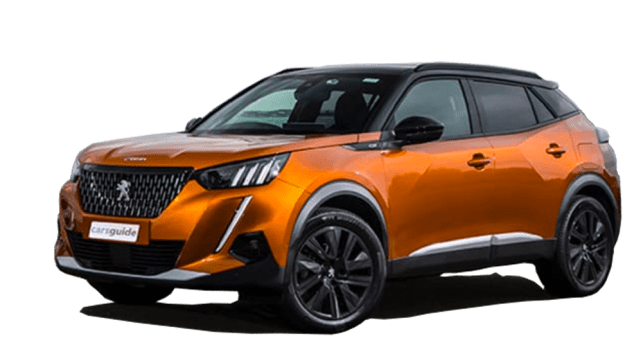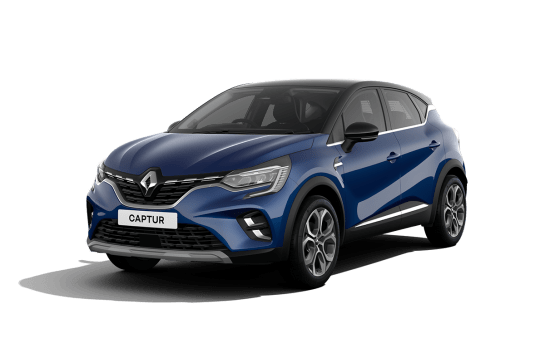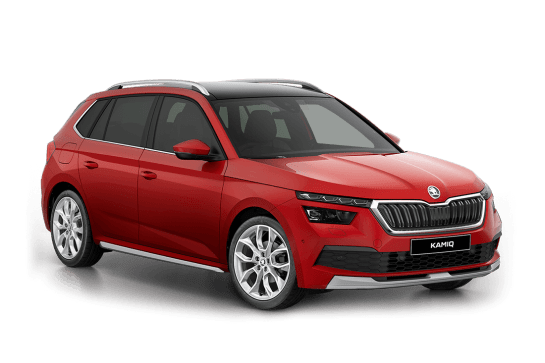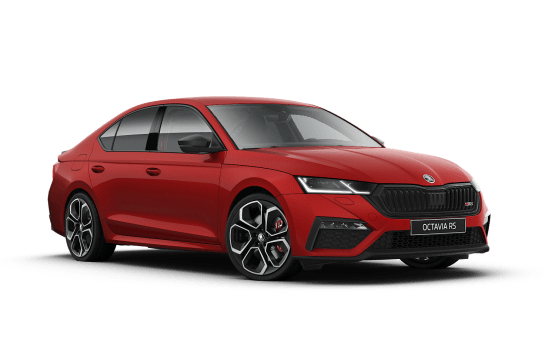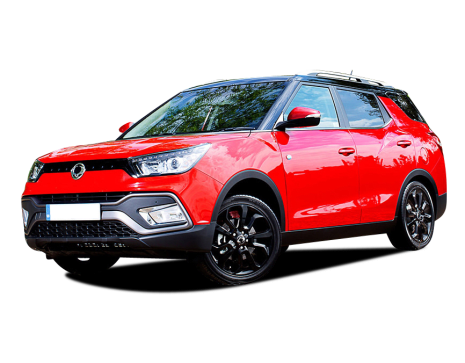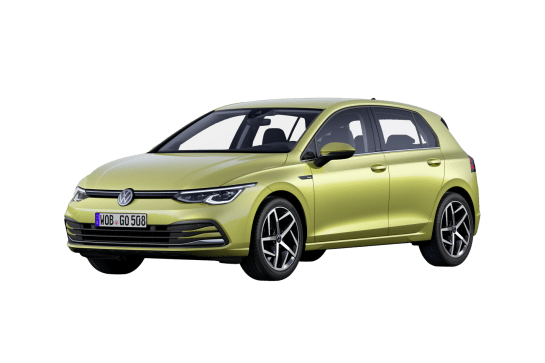
Honda CR-V VS Skoda Octavia
Honda CR-V
Likes
- Exceptional value for money
- Superb engineering
- Excellent family-focused packaging
Dislikes
- No full-sized spare wheel
- No hybrid AWD availability
- Firm ride
Skoda Octavia
Likes
- Value (including ownership)
- Safety
- Dynamics
Dislikes
- No rear seat power options
- Non-linear power delivery
- Requires premium unleaded
Summary
Honda CR-V
In the distant future, automotive historians will look back at the Honda CR-V as one of the true SUV originals.
Sure, it and the conceptually-identical Subaru Forester, trailed the trendsetting Toyota RAV4 of 1994 by three years, but collectively all three Japanese brands broke and then reset the Australian family-car mould in lightning-quick time. Too much so for the floundering local car industry to ever catch up.
Today, they remain the blue-chip mid-sized SUV contenders.
Six generations in, how does the completely-redesigned CR-V in all-new e:HEV (petrol-electric hybrid) guise stack up? Let's find out!
Read more about
- Honda CR-V 2024 review: VTi L7
- Will Honda Australia Elevate its number of SUVs with the 2024 WR-V to compete against the Mazda CX-3, Nissan Juke and Toyota Yaris Cross?
- Lots of Honda electric cars on the way including 2024 Prologue SUV and new sports car concept to be shown at Tokyo - but will Australia really continue to miss out?
| Safety rating | |
|---|---|
| Engine Type | 2.0L |
| Fuel Type | — |
| Fuel Efficiency | 5.5L/100km |
| Seating | 5 seats |
Skoda Octavia
Skoda’s a bit like that brooding, low-key actor you know but sometimes struggle to recall. Like Jacqueline McKenzie or Ben Mendelsohn. Considered and respected but far from a preening red carpet showboat.
And the mid-size Octavia is the quintessential Skoda… for people seeking quality engineering and tech without feeling the need to make a boastful badge statement.
The fourth-gen Octavia has been in market here for three years and on the back of a recent safety upgrade this new SportLine model, offered in five-door Liftback and traditional Wagon form, adds extra design and specification spice for the same money as the existing entry-level Style.
Read more about
It lines up against traditional sedans and wagons like Toyota’s all-conquering Camry, established players like the Mazda6 and in-demand newcomers like the BYD Seal EV, not to mention the usual medium SUV suspects.
Stay with us on this first drive to see if this SportLine has what it takes to steer you towards the Skoda Octavia.
| Safety rating | |
|---|---|
| Engine Type | 1.4L turbo |
| Fuel Type | — |
| Fuel Efficiency | 5.8L/100km |
| Seating | 5 seats |
Verdict
Honda CR-V8.5/10
The most-expensive version of the latest Honda CR-V is one of the most convincing family-orientated mid-sized SUVs in Australia, regardless of price and positioning.
For efficiency, economy, driveability, packaging, safety, quality, refinement and value-for-money, it is an outstanding value proposition. Don't buy a RAV4 or Forester hybrid before checking this one out.
We cannot wait for the e:HEV hybrid powertrain to filter down to cheaper grades, to make the best CR-V in decades even more accessible.
Skoda Octavia8.1/10
Is the Octavia SportLine your kind of automotive quiet achiever? It’s well-equipped and keenly priced with sleek yet understated looks, top-notch safety and a compelling ownership package.
It’s also fuel-efficient for its size and a refined, enjoyable drive. Before you go down that well-trodden mid-size SUV path I’d suggest adding this Skoda - Liftback or Wagon - to your new car short-list.
Note: CarsGuide attended this event as a guest of the manufacturer, with accommodation and meals provided.
Design
Honda CR-V
Though considered handsome, the CR-V has never been a style leader. Function over form has always been its calling card, and Number Six is no exception.
Cleanly drawn, with boxy proportions and a blunter, squarer nose providing a contemporary if somewhat bland appearance, the Thai-built Honda lives on the larger end of the mid-sized SUV scale, resulting in lots of space and practicality.
Yet there are interesting and worthwhile details to explore, like narrower-than-usual windscreen pillars for exceptional forward vision.
The same applies to the considered positioning of the exterior mirrors, minimising blind spots, while deep glass areas allow light to flood in.
The stylish, Volvo-esque L-shaped tail-light graphic probably connects most clearly with past CR-Vs, giving the latest version an elegant overall presence.
Compared to the old model, the latest version's wheelbase has been stretched by 40mm to 2700mm, while front and rear tracks are 10mm wider, coming in at 1611mm and 1627mm, respectively.
Note that the front-drive models' ground clearance is 198mm – 10mm less than on the (non-hybrid-only) AWD grades.
Skoda Octavia
The Skoda Octavia is a crisp, contemporary design combining firm character lines and carefully sculpted larger surfaces with a hint of the brand’s VW Group ownership peeking through here and there.
And it’s efficient aerodynamically with a drag coefficient (Cd) of 0.259 for the Liftback and 0.287 for the Wagon.
The broad black grille is uniquely Skoda although the rear treatment is closer to generic premium Euro. Swap out the Skoda badging for four rings or a blue, black and white roundel and no one would bat an eyelid.
But the SportLine stands apart thanks to a gloss-black finish on the grille, mirror covers, rear spoiler on the Liftback and roof rails on the Wagon.
On top of that a rear diffuser and front spoiler have been added, the window surrounds are matt black and dual exhaust tips finish off the rear end.
The interior is dominated by a handsome multi-layer dash design with a 10-inch multimedia touchscreen in the centre and a 10.25-inch ‘Virtual Cockpit’ instrument display facing the driver.
The grippy ‘leather-appointed’, flat-bottom steering wheel has shift paddles lurking behind the rim, there are sporty alloy covers on the pedals and the roof lining is black.
The cloth ‘Sports Comfort’ seats look and feel great, the materials used are high quality and the Octavia shares its umbrella-in-the-door trick with Rolls-Royce, although it must be said, the latter provides two.
Practicality
Honda CR-V
Little wonder the CR-V was the world's third most-bought SUV worldwide in 2023. It's big enough for most families' needs... and then some.
This is immediately apparent the moment the big doors are opened up nice and wide, revealing an airy, spacious and extremely user-friendly interior.
The Japanese brand has striven successfully for greater visual symmetry, harmony and operational simplicity in the dashboard's design and layout.
And, sure, the 9.0-inch touchscreen lacks the wow factor of vast buttonless displays as found in flashy alternatives such as the disappointing Chery Tiggo 7, but it works very effectively.
Hondas have always nailed the driving position bit down pat, and the RS is no exception, with ample seat and steering column adjustment, considered controls placements and unimpeded views of the instrumentation and road ahead due to the aforementioned thin pillars.
The instrumentation cluster is an electronic set-up offering the driver the choice of either super crisp and ultra-clear analogue dials, or somewhat fussier bar graphs, with a digital speedo augmenting both.
There's so much to enjoy and so little to criticise inside Honda's mid-sized SUV. Along with space to stretch, the front seats are notably comfortable and supportive, as several hundred kilometres sat ensconced in them proved. Both sides have electric adjustment at this price point, too.
Ventilation also rates highly, with the honeycomb full-dash-length grille and lovely toggle switches bringing aesthetic and tactile delight, respectively.
And, reflecting the CR-V's US focus, storage is on a large and helpful scale, offering bottle holders in the doors amongst other places to stash things in and on.
Moving to the rear seat area, entry/egress is ridiculously unimpeded, with a decently-shaped bench.
Families are also likely to appreciate series-best legroom, backed up by a handy amount of girth – always a good thing.
You're also met with occupant-facing air vents, overhead grab handles, even more door storage, the obligatory folding centre armrest with cupholders, front-seat-sited map pockets and a pair of USB-C outlets.
However, the standard sunroof does rob some headroom so people taller than about 180cm had better try before they ride, though the 60/40 backrest reclines to 16 positions and that's helpful here.
Being a hybrid, the RS e:HEV misses out on the sliding bench which adjusts by 190mm in other CR-Vs.
Vision out is exemplary back there, enhancing an already spacious and airy ambience. But if the front seat area majors on Japanese quality, the rear is hardly premium, with plenty of dreary cheap plastic trim, betraying the Honda SUV's focus on the price-driven American market. But nothing squeaked, rattled or broke, thankfully.
Further back, the tailgate rises remotely quickly enough, and there's quite a wide and long area to store things, but the electrification elements make for quite a high and uneven floor – though a deep bin area is also provided to hide stuff in.
There's also just a can of goo in lieu of a spare wheel.
Cargo capacity rises compared to the previous CR-V, ranging from 589 litres with the rear seats up, to 1636L, or 1072L if measured only to the window line.
Skoda Octavia
At a fraction under 4.7m long, just over 1.8m wide and close to 1.5m tall, with a close to 2.7m wheelbase the Octavia SportLine Liftback and Wagon are at the upper end of the mid-size category.
At 183cm I’ve got plenty of breathing room in the front, the low-level dash helping to deliver a spacious feel.
For storage, there’s a generous area under an extendable, height-adjustable armrest between the seats, twin cupholders in the centre console, bins in the doors with enough room for large bottles and a decent cooled glove box. There’s also Skoda’s signature lined rubbish bin in the driver’s door.
In the back, sitting behind the driver’s seat, set to my position, I’ve got plenty of room for my feet, legs and head as well as enough shoulder room for three full-size adults on cozy, medium length journeys.
Adjustable ventilation is welcome and storage options include map pockets on the front seat backs, big door bins, oddments storage under the air outlets and a pair of cupholders in the fold-down centre armrest.
Connectivity and power runs to two USB-C outlets, a 12-volt socket and a wireless charging pad up front with a second 12V in the boot. No USBs or 12-volt for back-seaters, which is a miss.
Speaking of the boot, with all seats up the Liftback offers a competitive 600 litres of storage space, expanding to 1555L with the 40/20/40 split rear seat folded. Those numbers grow to 640 and 1700L in the wagon. Plus, there’s a rear seat ‘ski-port’ style door in both.
A space-saver spare sits under the floor, the tailgate is power-operated and for those keen on towing the Octavia is rated up to a 1.5-tonne braked trailer with trailer stability control standard.
Price and features
Honda CR-V
At the time of writing, choosing the hybrid version over the regular petrol-turbo CR-V means forking out for the top-of-the-line RS. Less expensive (and luxurious) hybrid grades are expected soon.
Starting from $59,900 drive-away, it isn't cheap, especially as its two closest rivals – the RAV4 Cruiser Hybrid and Nissan X-Trail Ti e-Power e4orce – offer all-wheel drive (AWD) for around the same price, while the Honda is front-wheel drive only.
At least the RS e:HEV isn't short on equipment, especially safety, with 11 airbags, Autonomous Emergency Braking (AEB), blind-spot alert, lane-keep assist, rear cross-traffic alert and adaptive cruise control included. Check out our safety section below for more details.
Being the CR-V flagship, you'll also find adaptive LED headlights, a panoramic sunroof, dual-zone climate control, leather upholstery, powered and heated front seats, a 9.0-inch touchscreen, sat-nav, wireless Apple CarPlay/wired Android Auto, Bose premium audio with 12 speakers, digital radio, a wireless charger, privacy glass, hands-free powered tailgate, roof rails, front and rear parking sensors and 19-inch alloys.
Note, however, there is no spare wheel, just a tyre-repair kit. Not good enough. For why, please see the Cost of Ownership/Warranty section.
There's also five years' free subscription to 'Honda Connect', bringing remote-control operation for climate control, lights and locking/unlocking, trip log data, location status, geo-fencing and emergency callout.
What's missing? Along with the aforementioned AWD, some rivals at this price point include larger alloy wheels if that's your thing.
Otherwise, the RS e:HEV brings plenty of features to the table. Sadly, not of the picnic variety, however, unlike in the first two generations of CR-V (1997 and 2001).
Skoda Octavia
With the aim of giving the Octavia a value-focused mid-life boost, the SportLine adds some racy extras outside, inside and underneath and we’ll cover them in detail in the Design and Driving sections.
For now, it’s important to note it all comes at the same price as the already well-equipped, entry-level Style. That is, $40,590, before on-road costs, for the Liftback and close to $41,890 for the Wagon.
And to support this new variant’s arrival, national drive-away pricing has been set for both at an extra $1900 and $2100, respectively ($42,490 and $43,990).
Aside from that, the Sportline boasts a handy standard features list, the highlights being dual-zone climate control, adaptive cruise control, 18-inch alloy rims, auto LED matrix headlights, a power tailgate, a 10-inch media touchscreen (with voice recognition) and 10.25-inch digital instrument display, wireless Android Auto and Apple CarPlay, keyless entry and start, auto rain-sensing wipers, a reversing camera, built-in nav and eight-speaker audio.
An optional ‘Premium Pack’ ($3200) adds power adjustable front seats (with lumbar and memory function), heated front and rear (outboard) seats, ‘Adaptive Lane Guidance’, ‘Emergency Assist’, digital radio, tri-zone climate control and additional USB-C outlets. A panoramic sunroof is available on the Wagon for $1900.
‘Candy White’ is the single no-cost paint colour, with ‘Black Magic Pearlescent’, ‘Graphite Grey Metallic’, ‘Moon White Metallic’ or ‘Race Blue Metallic’ adding $770 to the price-tag while ‘Velvet Red Metallic’ steps up to $1100.
Overall, pretty good value for the category, even before you start factoring in the SportLine extras.
Under the bonnet
Honda CR-V
The CR-V hybrid is powered by a 2.0-litre four-cylinder direct-injection Atkinson Cycle petrol engine.
Married to a pair of electric motors that make a combined power output of 152kW, it delivers a system total of 135kW at between 5000rpm and 8000rpm, as well as an impressive 335Nm of torque from 0-2000rpm.
It sends drive to the front wheels via a single-speed electric continuously variable transmission (e-CVT), featuring deceleration paddles that help redirect regenerative braking energy back into the battery.
Tipping the scales at 1771kg (kerb), the power-to-weight ratio is 76.2kW/tonne. Not great, but the e:HEV's brawn lies in its hefty torque output.
Skoda Octavia
A 1.4-litre all-alloy, direct-injected, turbo-petrol four-cylinder engine sits under the Skoda Octavia’s bonnet, sending 110kW/250Nm to the front wheels via an eight-speed automatic transmission with ‘Tiptronic’ sequential manual shifting accessible via wheel-mounted paddles.
Efficiency
Honda CR-V
Like Toyota's hybrids, Honda's do not need to be plugged in; the small 1.06kWh lithium-ion battery fitted is charged by either the engine or via regenerative braking energy.
Honda says the e:HEV RS on the Urban, Extra Urban and Combined cycles should average 4.9, 5.8 and 5.5 litres per 100km, respectively. The latter figure equates to a carbon dioxide emissions rating average of 125 grams/km.
Fitted with a 57L fuel tank, that means the driver can expect to achieve about 1035km between refills – and on 91 RON regular unleaded petrol at that.
Out in the real world, we managed a still-laudable 6.5L/100km during our time with the RS e:HEV, achieved through a mixture of inner-urban and open-road driving.
Skoda Octavia
Skoda’s official combined cycle fuel economy number for the Octavia SportLine is 5.7L/100km for the Liftback and 5.9L per hundred for the Wagon, the 1.4-litre turbo four emitting 180g/km of CO2 in the process.
On the launch drive program covering urban, B-road and freeway running along the coast south of Sydney, NSW we recorded an average of 6.4L/100km in the Liftback. Not too shabby for a non-hybrid in this class.
Worth noting the minimum fuel requirement is the pricier 95 RON premium unleaded, though.
You’ll need 45 litres of it to fill the tank which translates to a theoretical range of around 790km… roughly 700km using our real-world number.
Driving
Honda CR-V
If the good-looking e:HEV RS's compelling value and great interior don't convince, then the driving experience might.
Building on five generations of gradual evolution, the latest CR-V uses an updated version of the previous model's all-new architecture – a very solid foundation to build an SUV upon.
Pairing that with Honda's latest hybrid electrification tech is the automotive equivalent of putting together peaches and cream. Even to a vegan.
From the first push of the starter button, the driving experience is seamless, elevating the e:HEV to the premium realm.
As it's in EV mode for much of the time at lower speeds, the SUV powers forward quickly and effortlessly, gliding along with a determined hum.
When the petrol engine eventually engages, it does so smoothly and quietly, yet the electric motor's influence and effects are far from done; the driver can sense all that torque (335Nm, remember) just from the immediacy of the throttle response.
Result? The CR-V's mid-range thrust makes it a deceptively rapid vehicle, accelerating instantly and surging strongly in almost no time at all. Keep an eye on that speedo, too, because the powertrain delivery is silken.
Furthermore, and going against type, the brakes thankfully avoid the wooden feel of many rival hybrids, and instead pull up immediately and with normal and natural pedal pressure.
Additionally, the paddle shifters provide variable off-throttle braking, though not quite down to a full stop.
Honda's chassis engineers have earned their keep when it comes to the CR-V's dynamics, too.
Light and easy around town for painless parking, the steering weights up nicely at higher speeds, allowing the driver to get into a linear rhythm with the machine, and without it feeling nervous or top-heavy when corners get tight – a rarity in an electrified SUV of this size.
And while it lacks the intimate connection of sportier SUVs like the Mazda CX-5 (given the RS badges), most people will appreciate the Honda's calm and controlled handling and road holding.
For the record, suspension in the CR-V consists of MacPherson-style struts up front and a multi-link rear end. However, a bit more suppleness would transform the e:HEV.
Wearing 235/55 R19 tyres, its ride around town is fine over larger bumps, absorbing them smoothly and without fuss, while overall tyre/road noise intrusion is pretty good, too.
Yet smaller-frequency surface irregularities, like joins and rail tracks, are not so easily dealt with, resulting in some sudden harshness.
Driven over exactly the same roads as the ZR-V e:HEV equivalent, it's clear there isn't quite the polish or sophistication that makes the smaller Honda SUV a highly-convincing dynamic and refined alternative to luxury German alternatives.
Other than the occasionally fidgety suspension, the CR-V hybrid makes for a dynamically impressive family SUV.
Skoda Octavia
Skoda says the Octavia SportLine will accelerate from 0-100km/h in 9.0 seconds, which isn’t ferociously fast but far from sluggish at the same time, especially for a roughly 1.3-tonne vehicle. And the fact peak torque (250Nm) is available from 1500-4000rpm makes it easy to drive with plenty of oomph through the mid-range.
Worth noting, while the urge is there, the turbo four’s power delivery isn’t always linear, more often from step off, with the engine at times taking half a beat to respond to a squeeze of the accelerator pedal before the power arrives.
Nothing dramatic, however, and the ‘Shift-by-Wire’ eight-speed auto transmission is smooth, with ‘Eco’, ‘Normal’ and ‘Sport’ modes available, the latter holding onto ratios longer on the way up the gears and shifting down more readily when an extra burst of acceleration is required. And if you want to take full control, ‘manual’ shifts via wheel-mounted paddles are satisfyingly quick.
Suspension is strut front with a ‘compound link crank-axle’ at the rear, the latter being Skoda-speak for a torsion beam.
The SportLine’s suspension is 15mm lower than the Style’s with springs and shock absorbers re-tuned for sharper dynamic response. Yet, despite that and the standard 18-inch rims shod with low-profile tyres there’s no penalty in terms of ride compliance.
Even over coarse B-road surfaces the Octavia remains comfortable and composed. The steering is nicely weighted and road feel is good, with a nice connection between the front tyres and hands on the wheel.
Pressing on through the curves the car is stable and balanced with the (225/45) Bridgestone Turanza rubber gripping hard. And if you really have the bit between your teeth an electronically-controlled diff lock helps put the power down effectively.
Braking by ventilated discs at the front with solid rotors at the rear and under the pressure of some steep, twisting and fairly rapid descents stopping power is solid. The pedal is progressive on application and when easing off.
Under the heading of miscellaneous observations, engine noise is agreeably low, especially for a small capacity turbo-petrol engine, the sports front seats are supportive and comfortable over lengthy stints behind the wheel and a lateral slider located below the central multimedia screen to control audio volume is a neat ergonomic solution.
In the midst of the current arm wrestle between the design cleanliness of an on-screen volume control and the simple effectiveness of a physical dial the Octavia’s slider, while still a haptic-style operation, represents a safe and practical middle ground between the two.
Safety
Honda CR-V
Honda has yet to publish ANCAP crash-test results for the latest CR-V. For what it's worth, the previous two generation models achieved a maximum five-star assessment.
Today's CR-V comes with 11 airbags, including two dual front, dual side, dual front knee, front-centre, dual rear side and full-length curtains.
On the active-safety front, there is AEB with pedestrian and cyclist detection, low-speed braking control front and rear, road departure mitigation (RDM), forward-collision warning, blind-spot alert, lane-departure warning/keep, rear cross-traffic alert, adaptive cruise control (with full stop-go), low-speed follow and traffic-jam assist, traffic-sign recognition, driver-fatigue warning, adaptive driving beam and auto high beams.
You'll also find front/rear parking sensors, anti-lock braking with brake assist, 'Electronic Brake-force Distribution', hill-start assist, stability control, traction control, an intelligent speed limiter, trailer stability assist, tyre-pressure monitors and something called 'Straight Driving Steering Assist'.
An ISOFIX child-seat latch is fitted to each outboard rear seat position, while a trio of anchorage points for straps are included either on or behind, as well.
Honda says its AEB system is operational from 5.0km/h, the RDM from 30km/h, the lane support systems from 72km/h and the traffic-jam assist tech works between 0-72km/h. Top speed is 186km/h.
Skoda Octavia
Safety is one of Skoda’s strongest suits so no surprise the Octavia scored a maximum five ANCAP stars from assessment in 2019.
It includes active crash-avoidance tech highlights like AEB (with pedestrian and cyclist detection), a surround-view and reversing camera, ‘Park Assist’, lane departure warning, lane keeping assist, rear cross-traffic alert, rear parking sensors, tyre pressure monitoring and fatigue detection.
If an impact is unavoidable, there are eight airbags on-board, including a front centre and driver’s knee bag which holds up well in 2024 and shows how far ahead of the passive safety game the Octavia was when it launched here in 2021.
There are three top tethers for child seats across the second row, with ISOFIX anchors on the outer positions.
Ownership
Honda CR-V
Honda offers a five-year/unlimited kilometre warranty that also includes roadside assistance.
At the time of publication until the end of March, there is a special offer that extends those to seven years.
Additionally, there is a six-year rust perforation warranty and an eight-year hybrid-battery module warranty.
There's also five years' free subscription to 'Honda Connect', bringing remote-control operation for climate control, lights and locking/unlocking, as well as trip log data, location status, geo-fencing and emergency callout access.
The CR-V's servicing intervals are every 12 months or 10,000km or when the engine oil monitor light illuminates, with capped price servicing pegged at an annual flat fee of $199 for the first five years.
That's under $1000 over that period of time. Nothing extraordinary here unless you remember the old days of how expensive it was to service new Hondas.
Note, however, that the e:HEV's lack of a spare wheel does bring additional costs – namely in the cost of replacing the expensive tyre-repair kit, as well as the substantial time, inconvenience and flow-on issues of a more-severe puncture that can render the CR-V undriveable if the tyre-repair kit is unable to plug the hole.
Honda is not alone in not offering a spare wheel in its hybrid SUV range, but there are real consequences in being stranded with an unfixable flat tyre that needs to be factored in. Family holidays can be made or ruined in such circumstances.
Skoda Octavia
The Octavia is covered by Skoda’s seven-year, unlimited-kilometre warranty, which is two years up on the majority of the mainstream market.
Roadside Assist is complimentary for the first year, renewed annually if you have your Octavia serviced at an authorised Skoda dealer.
The main service interval is 12 months/15,000km, which is in line with most of the competition and Skoda offers five- and seven-year service packs, the latter equating to $393 per workshop visit, which isn’t out of line for the segment.
And through Skoda Choice you can opt for a Guaranteed Future Value offer ranging up to five years and currently at a 6.99 per cent rate.













